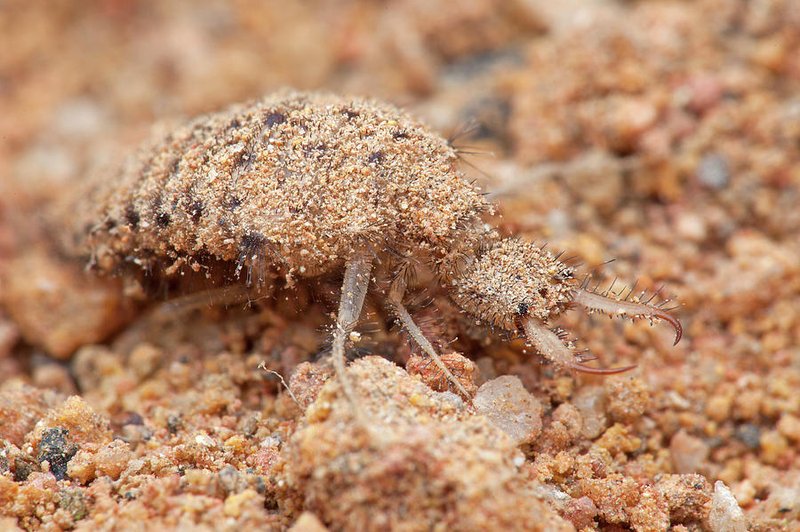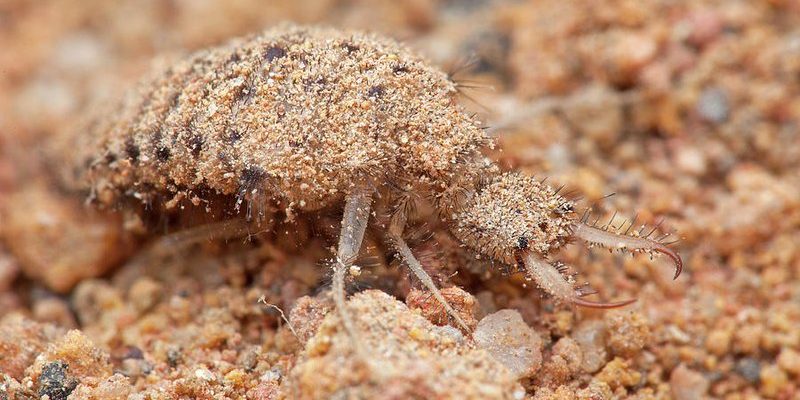
Ant lions, primarily known for their clever pit-building traps, spend most of their lives in this larval form before transforming into delicate adult dragonflies. And believe it or not, they’re not just fascinating to observe in their natural environment; studying them in captivity can offer insights into their behavior, growth, and even their role in the ecosystem. So, grab your coffee, and let’s take a closer look at the potential of ant lion larvae in captivity!
What Are Ant Lion Larvae?
Ant lion larvae are the juvenile form of insects belonging to the family Myrmeleontidae. They are mostly found in sandy or loose soil environments, where they spend a lot of their time digging those famous funnel-shaped traps. The larvae are predatory and primarily feed on ants and other small insects that tumble into their cunningly designed pits.
You might be wondering, what’s so special about them? Well, these little creatures are not just clever hunters; they also exhibit fascinating behaviors. For instance, once the larva catches its prey, it uses its strong jaws to drag the unfortunate victim into the pit for a meal. Imagine a miniaturized version of a monster movie, where the unsuspecting prey has no idea what’s about to happen!
Life Cycle of Ant Lion Larvae
The life cycle of ant lion larvae is pretty interesting, and it’s crucial to understanding them if you’re considering keeping them in captivity. They start as eggs, which the female lays in sandy soil. Once they hatch, the larvae begin their predatory journey. This stage lasts several months, depending on the species and environmental conditions.
During this time, the larvae can grow significantly. They’ll molt multiple times, shedding their skin as they increase in size. This growth phase is where they build their iconic pits. The larvae are highly adapted for this lifestyle, camouflaging themselves with sand and debris to avoid detection by predators. It’s like they have their own little survival strategy!
Can Ant Lion Larvae Be Kept in Captivity?
You might be glad to hear that yes, ant lion larvae can be kept in captivity! Many enthusiasts have successfully created suitable environments for them. However, there are several essential factors to consider to ensure they thrive outside their natural habitat.
Firstly, environment is critical. You’ll need a terrarium or enclosure with sandy soil for them to dig their pits. Make sure the enclosure is secure—they can be surprisingly good at escaping! You’ll also need to maintain proper humidity and temperature levels, mimicking their natural conditions as closely as possible.
Secondly, diet is vital for their development. In captivity, they can be fed small insects like ants, termites, or even fruit flies. Watching them hunt can be quite the spectacle! Providing a consistent food supply is essential for their growth and health.
Studying Ant Lion Behavior in Captivity
Studying ant lion larvae in captivity can yield valuable insights into their behavior and ecology. For instance, you can observe how they build their traps and interact with their environment. This observation can lead to a richer understanding of their hunting techniques and their predatory nature.
You might also want to experiment with different soil types or moisture levels to see how that affects their behavior. It’s a hands-on approach to learning about their adaptability. Plus, it offers a fantastic opportunity for project-based learning—perfect for classrooms or educational settings!
The Challenges of Farming Ant Lion Larvae
While keeping ant lion larvae sounds fascinating, farming them presents some challenges. One major issue is the space needed to keep them healthy and allow them to exhibit natural behaviors. If you’re thinking about a larger operation, you’ll need to consider how to provide adequate space and resources for their survival.
Another challenge is ensuring a continuous food source. If you can’t provide enough food, or if the food supply doesn’t meet their needs, their growth can slow down or halt completely. Additionally, keeping the environment stable can be tricky—ant lions are sensitive to changes in humidity and temperature.
Despite these challenges, many hobbyists and educators find the endeavor rewarding, helping foster a deeper appreciation for these unique creatures.
Setting Up Your Ant Lion Habitats
If you’re ready to take the plunge and set up an ant lion habitat, here’s what you need:
- Container: A clear terrarium or aquarium works best. Make sure it has a lid.
- Sandy substrate: Use fine sand or a mix of sand and soil to allow them to dig.
- Moisture: Keep the substrate slightly moist—but not soggy—to mimic their natural environment.
- Food: Regularly provide small insects, like ants or fruit flies. You can culture these at home!
- Temperature: Keep the enclosure in a warm area, ideally between 70°F and 85°F (21°C to 29°C).
Setting up a habitat may take some effort, but the rewards are immense—watching these predators in action is truly a sight to behold!
Ant lion larvae are not just creatures to admire in the wild; they’re also captivating subjects for study in captivity. While farming them comes with its own set of challenges, the potential for learning and observation can be incredibly rewarding. Whether you’re a budding entomologist, a teacher seeking hands-on learning experiences, or just an insect enthusiast, the journey of keeping ant lion larvae can be both enlightening and entertaining.
So, if you’re considering diving into this unique hobby, get ready for an adventure filled with discovery and a deeper appreciation for the tiny predators that lurk in the sand. Honestly, there’s something special about watching nature unfold right in your own home!

